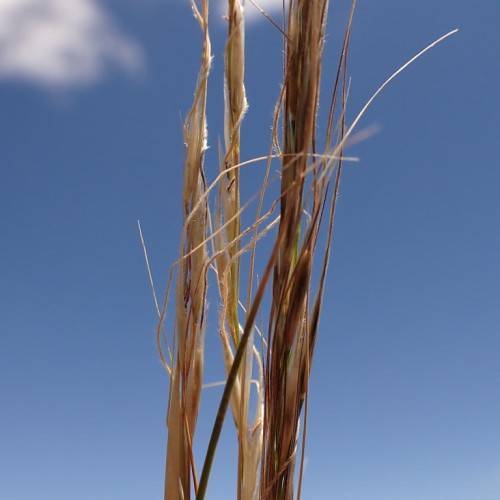
Common Western Needlegrass
Achnatherum occidentale subsp. pubescens
Watering:
Frequent
Hardiness Zone:
Sun:
full sun
Growth Rate:
Low
Drought Tolerant:
Yes
Salt Tolerant:
Yes
Care Level:
Medium
watering
Western Needlegrass should be watered generously and deeply 2 to 3 times per week during its active growing season in spring and summer. Give a good soaking to ensure the entire root system is being reached. On drier or warmer days, you may need to increase the water slightly. Decrease the water frequency and amount during the winter months as the plant will go dormant.
sunlight
Western Needlegrass is a drought-tolerant, native grass species found in western North America, primarily in drier and rocky regions of California, Nevada and Oregon. It prefers full sun, meaning it needs at least 8 hours of direct sunlight every day. However, it will tolerate partial shade for short periods of time and can generally handle temperatures between 50 and 90 F. Generally, Western Needlegrass needs to be exposed to sunlight between morning exclusive hours and no later than mid-afternoon for optimal growth and development.
pruning
Western Needlegrass, Achnatherum occidentale, should be pruned in late winter or early spring. Generally, 1/3 of the tallest stems should be removed each year so that wider, fuller plants are maintained. Make sure to prune just above a node of the stem for the best results. Additionally, old, damaged, or dead stems should also be removed. Keeping the plants looking healthy and vigorous is the main goal with pruning Western Needlegrass.
